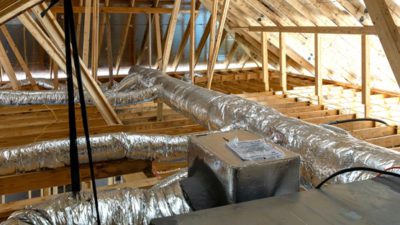It’s already that time of the summer when we are really starting to feel the heat. MA residents are fleeing their homes for cool coffee shops and are dreading their energy costs as they rise with the temps.
According to the Washington Post, approximately 11% of households (which equals about 13 million of them) in the U.S. don’t have air conditioning at all.
Whether you have air conditioning or not, here are some ways to stay cool at home this summer without wasting money or energy.
Reduce Moisture in the Air
Did you know that sweating is a way for your body to return to its normal temperature? According to Popular Science, as sweat droplets on your skin turn to gas (from liquid), warmth is pulled away from your body, cooling your blood and decreasing your overall body temperature. The more moisture there is in the air, the less space there is for evaporating sweat which makes everything feel hot.
Simply put, the less moisture in the air, the better! Use plants like cacti, succulents, bromeliads, and others that need little water to thrive and get what they need by soaking up moisture in the air from their environment.
A dehumidifier is also a good option for removing moisture from the air. (Energy-efficient dehumidifiers use 28% less energy than traditional models and operate just as well.) If you’re a MA resident, the sponsors of the Mass Save® program are offering rebates of $30 to help cover the cost.
Through the Mass Save program, you can also access 100% off air sealing which helps with moisture control. All you have to do is sign up for a no-cost Home Energy Assessment here and you’ll get a custom home energy report that will detail how your home is consuming energy and where it’s escaping through gaps, cracks, and holes. All at no-cost!
Use Household Fans
While a fan won’t cool the air, it provides a nice breeze across your body that makes it feel cooler. According to the U.S. Department of Energy (DOE), “if you use air conditioning, a ceiling fan will allow you to raise the thermostat setting about 4°F with no reduction in comfort.”
If you’re looking to buy a ceiling fan, opt for an energy-efficient option that uses 20% less energy than typical models.
“For a bedroom up to about 175 square feet, opt for a 42- to 48-inch six-blade ceiling fan, while a space up to about 365 square feet can benefit from a 56-inch blade,” according to the Huffington Post.
According to the U.S. DOE, “ceiling fans are only appropriate in rooms with ceilings at least eight feet high. Fans work best when the blades are 7 to 9 feet above the floor and 10 to 12 inches below the ceiling. Fans should be installed so their blades are no closer than 8 inches from the ceiling and 18 inches from the walls.”
If you’re using a ceiling fan, just remember to make sure it’s set to move in a counterclockwise direction so that the warm air is going in the right direction. Also, don’t forget that fans cool people, not rooms, so turn it off when you leave the room or the house to save energy.
If you don’t have a ceiling fan, table fans and floor fans also help to create that wind chill effect you want. Try putting a table or floor fan behind a bowl of ice, frozen water bottles, or ice packs and you will get a nice cool breeze when it’s aimed right at you. (Yes, this really works!)
Keep the Sunlight Outside with Curtains
According to the U.S. DOE, “about 30% of a home’s heating energy is lost through windows. In cooling seasons, about 76% of sunlight that falls on standard double-pane windows enters to become heat.”
To keep the heat at bay throughout the day, use window treatments like curtains, drapes, shades, shutters, insulated cellular shades, window quilts, and window films. To save the most energy and money, and to keep your home as cool as possible, keep all window coverings closed throughout the day when you’re at work so that it’s comfortable when you return.
If you’re home during the day and need some light, open the curtains on the side of your home that doesn’t get direct sun exposure.
If you already have curtains in place, check that they’re the proper material and color, and that they are hung correctly for energy efficiency purposes. Curtains should be hung close to the window and hit the windowsill or floor. The outward-facing side of the curtain should be white, red, orange, or yellow to save the most energy. According to the U.S. DOE, “studies demonstrate that medium-colored draperies with white-plastic backings can reduce heat gains by 33%.”
Your window coverings will also help you save energy in the winter. When you leave them open during the day, you can let the heat in to warm up your place when it’s cold outside. “When drawn during cold weather, most conventional draperies can reduce heat loss from a warm room up to 10%,” says the U.S. DOE.
To learn more about the different window covering options you have and the benefits of each, go here.
Staying cool this summer shouldn’t come with high energy costs. At HomeWorks Energy, we know energy efficiency and we love helping our neighbors stay comfortable in every season. If you want to learn how your house is consuming and losing energy and where you can save money, sign up for a no-cost Mass Save Home Energy Assessment here, and you can also get access to big incentives and rebates! Have questions or want to sign up over the phone? Call us at (781) 305-3319 and we’ll take care of you!





